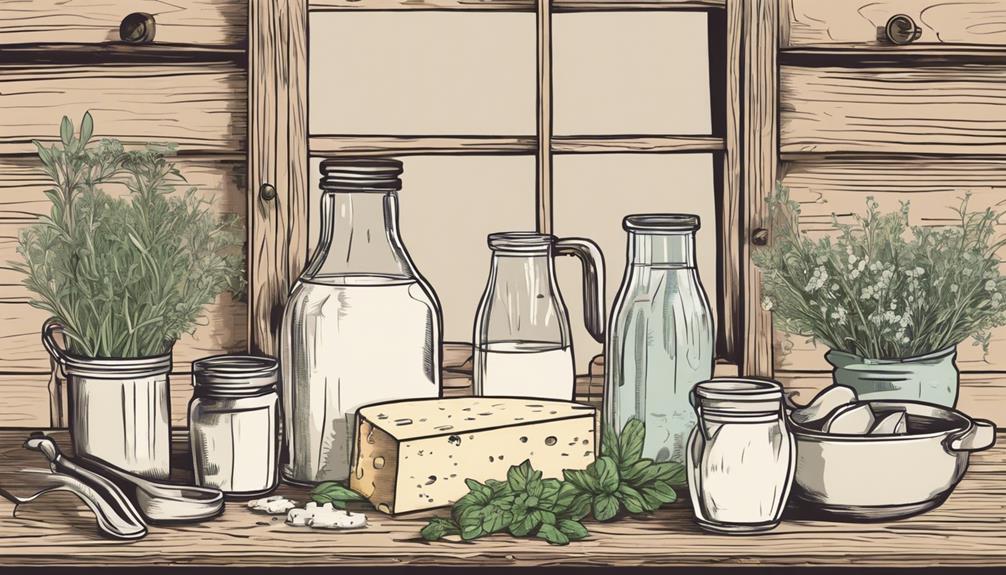See All: Cheese Making
Watch How To Do This Here…
YES! You can make cheese at home. Take our FREE 4-Part video training series to simplify cheesemaking for everyone. No waste. No overwhelm. No missing steps. You can make delicious, healthy cheese, even if you only have access to grocery store milk and regular kitchen equipment…
Click Here To Watch Step By Step Now
“I’ve recently started my journey into cheese making in my home kitchen here in Vancouver, Canada. I’m keen on making sure that the milk I use is of the highest quality and handled properly. Can you provide detailed information on how best to handle and store milk before using it for cheese making?” Thanks, Olivia, Vancouver, Canada.
Handling and Storing Milk Before Cheese Making
Hey Olivia, it’s fantastic that you’re diving into the world of cheese making! Quality milk is the foundation of great cheese, and handling and storing it correctly is crucial for achieving the best results. Here’s what you need to know to ensure your milk is perfect for cheese making.
Importance of Milk Quality
The quality of your milk significantly impacts the texture, flavor, and overall success of your cheese. Fresh, high-quality milk contains the right balance of fats, proteins, and enzymes, which are necessary for the cheese-making process. Poorly handled or stored milk can lead to undesirable flavors, off-textures, and even spoilage.
Source of Milk
Before talking about handling and storage, let’s touch on sourcing. Whether you’re using store-bought or farm-fresh milk, it’s essential to ensure it comes from a reliable source.
- Store-bought Milk: Look for whole milk that is pasteurized and non-homogenized, as homogenization can affect cheese texture.
- Farm-fresh Milk: If you have access to raw milk from a local dairy farm, make sure the farm follows strict sanitation practices to ensure milk safety.
Proper Handling of Milk
1. Sanitation
Good hygiene is paramount. All utensils, containers, and surfaces that come in contact with your milk should be sanitized. Contamination can affect the milk’s suitability for cheese making.
2. Cooling the Milk
After milking, whether it’s from your cow or farm-fresh, cooling the milk rapidly is vital to slow bacterial growth. Here are some tips:
- Immediate Cooling: Place the fresh milk in an ice water bath. Aim to cool it to below 40°F (4°C) as quickly as possible.
- Refrigeration: After initial cooling, store the milk in the refrigerator at or below 40°F (4°C). Avoid placing the milk in the refrigerator door, where temperatures fluctuate.
3. Transporting Milk
If you’re getting milk from a local farm, transport it in a clean, insulated container to maintain the cold temperature. This minimizes the risk of bacterial growth and contamination.
Storing Milk for Cheese Making
1. Appropriate Containers
Use food-grade, airtight containers to store milk in the fridge. Glass jars are excellent as they don’t retain odors and are easy to sanitize. Avoid plastic containers that can harbor bacteria.
2. Duration of Storage
Fresh raw milk is best used within 48 hours for cheese making to ensure it retains its best qualities. Store-bought milk can generally be used until its expiration date, but fresher is always better.
3. Monitoring Temperatures
Keep an eye on your fridge temperature. An accurate refrigerator thermometer can help ensure it stays below 40°F (4°C). Fluctuations can spoil the milk and affect the consistency of your cheese.
Prepping Milk for Cheese Making
1. Warming Milk
Before starting the cheese-making process, you’ll need to bring the milk to the desired temperature, usually around 85°F to 90°F (29°C to 32°C). Here’s how:
- Gradual Heating: Gently heat the milk in a water bath or on low heat, stirring occasionally to ensure even heating.
- Using a Thermometer: Use a dairy or kitchen thermometer to monitor the temperature accurately. Avoid overheating, as this can affect the milk’s proteins.
2. Checking for Freshness
Always check for any off smells or unusual textures before using the milk. Fresh milk should smell clean and slightly sweet.
Common Mistakes to Avoid
1. Improper Sanitization
Skipping or skimping on sanitization can introduce unwanted bacteria to your milk, resulting in spoilage or off-flavors in your cheese.
2. Inconsistent Temperatures
Rapid temperature changes during storage can cause precipitation of milk proteins, affecting the texture and yield of your cheese.
3. Using Old Milk
Using milk that’s past its prime can compromise your cheese. Always aim for the freshest possible milk to get the best results.
Final Thoughts…
Olivia, thanks for your great question from Vancouver, Canada. Remember, the foundation of exceptional cheese is high-quality, well-handled milk. Focus on sourcing it from reputable places, maintaining strict hygiene, and consistently monitoring temperatures during storage. Enjoy your cheese-making adventure!
Return To: Cheese Making
Free Step By Step Cheese Making Videos…
YES! You can make cheese at home. Take our FREE 4-Part video training series to simplify cheesemaking for everyone. No waste. No overwhelm. No missing steps. You can make delicious, healthy cheese, even if you only have access to grocery store milk and regular kitchen equipment…

